Low-Sodium Diet: 7-Day Meal Plan And Expert Tips
Raise the bar on your health by cutting down on one mineral.
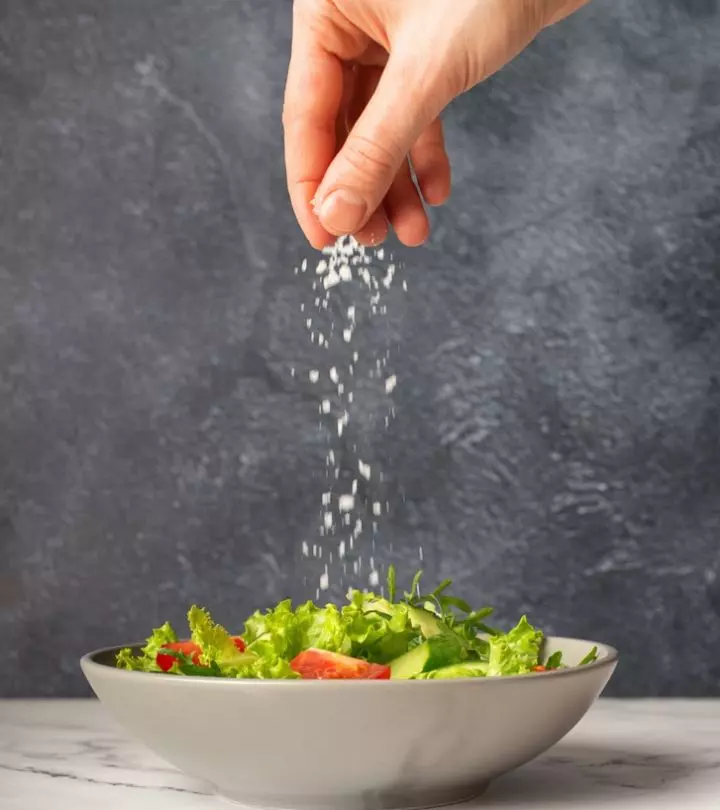
Image: Shutterstock
Sodium is an essential element commonly found in salt. It helps your cells stay balanced and keeps your body’s fluid levels in check, regulating your blood pressure (1). An imbalanced diet and lifestyle can lead to high sodium levels in your body that may increase the risk of high blood pressure and obesity (2).

Consuming a low-sodium diet helps manage high sodium levels. This article explores the details of a low-sodium diet, healthy low-sodium diet foods, and a balanced meal plan that you may follow. Scroll down to learn more.
 At A Glance: Low-Sodium Diet
At A Glance: Low-Sodium Diet- Principle: Consuming foods and beverages with low sodium levels.
- Purpose: To manage sodium levels.
- Who It Is For: Those with hypertension, obesity, kidney-related and vascular issues.
- Who Should Avoid: Those with a sodium deficiency, pregnant and nursing women, and people with heart problems.
- Cons: Inadequate sodium intake can affect fluid balance and muscle contractions, leading to weakness, cramps, headaches, and low blood pressure.
In This Article
What Is A Low-Sodium Diet?
A low-sodium diet involves consuming foods that keep your sodium intake under the recommended dose. It may help reduce the risk of cardiovascular diseases such as hypertension.
The acceptable dose of sodium for a healthy individual is between 3-5 grams/day. Your chances of developing cardiovascular diseases increase if your sodium intake is higher or lower than this recommended range (3). However, a low-sodium diet may be recommended to manage elevated sodium levels.
Since sodium is found in a lot of food other than just salt, a low-sodium diet involves the customization of meals. It helps maintain the required levels of sodium levels in your body.
Key Takeaways
- A low-sodium diet aims to limit sodium intake, promoting heart and kidney health by reducing blood pressure and fluid retention.
- Daily sodium intake should be around 2.3 grams (5.8 grams of salt) for most individuals, but as low as 1.5 grams (1,500 mg) for certain health conditions.
- Focus on fresh foods, herbs, and spices to flavor meals, while avoiding processed, high-sodium foods and using salt sparingly.
How Much Sodium Is In A Low-Sodium Diet?
Even If you are healthy, you need to watch your sodium intake. According to a study based on prospective cohort evidence, the general population should aim for <5 g sodium per day (3).
For people with conditions like hypertension, obesity, chronic kidney disease, or diabetes, 1.5-2.3 grams (1,500-2,300 mg) per day is recommended (4). This limit is considered ideal by the American Heart Association as well (5). A low-sodium diet plan helps manage blood pressure, which is necessary in effective diets for good heart health, like the low-cholesterol diet.
However, the debate over the adequate recommended range of sodium is still ongoing among the leading health organizations (5). Therefore, consult a healthcare expert for personalized recommendations.
The doctor may advise you to lower your sodium intake due to various health reasons. The next section explores why you should consider limiting your dietary sodium.
Why Should You Reduce Sodium In Your Diet?

Many people consume way more sodium than their bodies need. While a little sodium is necessary for good health, having too much can lead to health issues. The major reason is that sodium impacts how your body manages fluids. Consuming too much salt increases fluid retention that may raise your blood pressure (5).
You need to reduce your sodium intake as a high-sodium diet may lead to (6), (7):
- Hypertension
- Osteoporosisi A medical condition characterized by weak and brittle bones, making them more susceptible to fractures.
- Stomach cancer
- Diabetes
- Kidney diseases
- Neurological problems
- Cardiovascular diseasesi A class of diseases that involve the heart and blood vessels, including conditions like heart disease and stroke.
- Vasculaturei Refers to the network of blood vessels in the body, including arteries, veins, and capillaries. damage
- Stroke
 Did You Know?
Did You Know?A low-sodium diet will gradually help you alleviate the symptoms of this disorder and improve your overall well-being. Check out the next section to learn the ways a low-sodium diet benefits your health.
Health Benefits Of A Low-Sodium Diet

- Regulates Blood Pressure
Research shows that excessive intake of ultra-processed foods that are high in sodium increases the risk of high blood pressure (9). Excess sodium may lead to increased fluid retention that may cause higher pressure in the blood vessels. Reducing sodium intake may help lower blood pressure and be beneficial for hypertension (4).
- Improves Heart Health
This type of diet may reduce the risk of heart disease by improving blood vessel function and reducing any strain on the heart. It may also lower the risk of congestive heart failure, a condition in which the heart is unable to pump blood effectively (5). The DASH diet is one such diet designed to reduce sodium intake to manage high blood pressure and improve overall heart health.
- Improves Kidney Health
Less sodium can be beneficial for individuals with kidney problems, as it may help reduce the workload on the kidneys. It may also slow the progression of kidney disease and reduce the risk of kidney stones (10), (11).
- May Reduce Edema
It may alleviate swelling caused by excess fluid retention in the body. This is important for individuals with conditions like heart failure, liver disease, or kidney disease (12).
- Lowers The Risk of Stomach Cancer
Research suggests that a low-sodium diet may be associated with a reduced risk of stomach cancer as compared to a high-sodium diet (13).
- Builds Stronger Bones
Research shows that high sodium intake negatively affects bone health (14). Lower sodium levels may help prevent excessive urinary calcium excretion, promoting better bone density and overall bone health. Make sure to strike a balance between sodium reduction as too little or too much of it can be equally worse.
- May Help Manage Diabetes
A low-sodium diet may be beneficial for individuals with diabetes as it may help in managing blood pressure. It is shown to improve HbA1c levels and fasting blood glucose that may manage diabetes and improve overall cardiovascular health (15).
- May Improve Diet Quality
A low-sodium diet may encourage you to reduce the intake of processed and unhealthy foods, leading to better overall nutrition. With the aim of sodium reduction, you start consuming fresh and whole foods that can promote better health. This may help lower the risk of hypertension and related health issues.
There is no doubt that reducing sodium can be beneficial for your health. Keep reading to know how to transition to a low-sodium diet.
General Guidelines For Cutting Down On Sodium Intake
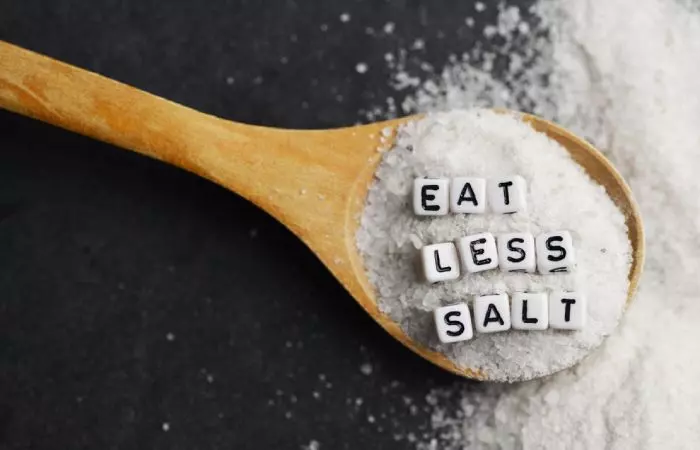
Sodium is not just found in salt. Ultra-processed foods are the main source of dietary sodium (2). Therefore, a low-sodium diet is essentially a diet that minimizes ultra-processed foods and emphasizes choosing minimally processed whole foods. Many benefits of a low-sodium diet may not actually come from reducing sodium intake but could be due to improving overall diet quality. Follow the below low-sodium diet guidelines issued by the FDA (16), (17):
- Pay close attention to food labels and the nutrition facts panel to check the sodium content per serving.
- Choose fresh foods like fruits, vegetables, lean meats, and whole grains as they are lower in sodium compared to processed and pre-packaged foods
- Cook your meals at home to have control over the ingredients you use.
- Use herbs and spices instead of salt to flavor your dishes.
- Be cautious with condiments such as ketchup, salad dressings, and soy sauce as they may be high in sodium.
- Rinse and drain canned beans, tuna, and cottage cheese to help reduce their sodium content.
- Practice portion control even if a food is low in sodium per serving.
- Focus on gradual reduction if you are used to a high-sodium diet.
- Educate yourself about the salt content of common foods to select your foods carefully.
 Fun Fact
Fun FactIt is also essential to know about your required sodium intake to figure out your meals on a low-sodium diet. Scroll down to the next section to get an idea about your average sodium needs per day.
How To Plan A Low-Sodium Diet
Before starting a low-sodium diet, you should determine your daily sodium requirement, which may differ based on your age and conditions.
The National Academies of Sciences, Engineering and Medicine establishes the recommended sodium dose as per age and health as suggested in the following table (18).
| Age | Sufficient intake (mg/day) | Maximum tolerable intake (mg/day) | When reducing risks of chronic diseases (mg/day) |
|---|---|---|---|
| 0–6 months | 110 | Not specified | Not specified |
| 7–12 months | 370 | Not specified | Not specified |
| 1–3 years | 800 | Not specified | Reduce intake if more than 1,200 |
| 4–8 years | 1,000 | Not specified | Reduce intake if more than 1,500 |
| 9–13 years | 1,200 | Not specified | Reduce intake if more than 1,800 |
| 14–70 years | 1,500 | Not specified | Reduce intake if more than 2,300 |
Different foods have varying sodium levels that may lead to an overdose if not planned carefully. Read more to know about the foods you can eat on this diet.
A Low Sodium Foods List To Follow
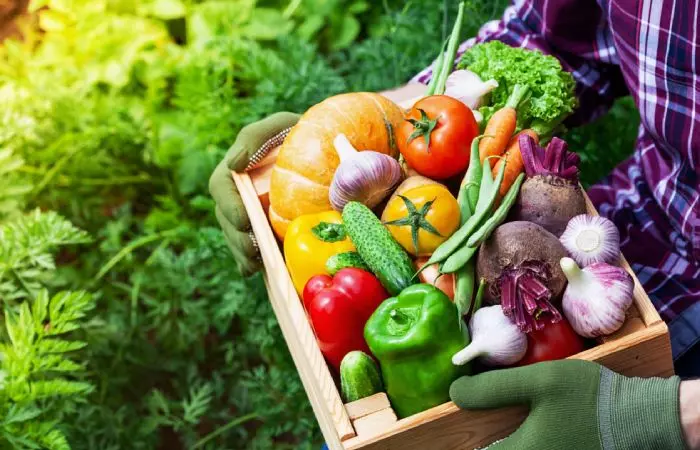
The amount of sodium in foods keeps varying and depends on their source and how processed they are. Foods like fruits, vegetables, oils, and cereals are naturally low in sodium, typically containing anywhere from a tiny amount to around 20 mg per 100 g, except for a few exceptions such as bell peppers, broccoli, etc (1), (19).
You can refer to the following list of low-sodium foods that some patients recommended in a study (20), (21), (22), (23).
| Vegetables | Any fresh vegetables without sauces or salt. Example: Shiitake mushrooms, carrots, tomatoes, peas, cabbage, onions, potatoes, taro, leafy greens, etc. |
| Fruits | Any fresh, frozen, or dried fruits. Example: Oranges, avocados, peaches, apricots, apples, pears, etc. |
| Grains and cereal | 4 slices of regular bread per day. Any cereal, rice macaroni, or spaghetti without salt (¾ ounces). Pasta, white rice, barley, brown rice, semolina, couscous, oats, wheat germ, white flour, bread, etc. |
| Pulses, seeds, and nuts | Pine, nuts, sunflower seeds, flax seeds, etc. |
| Meat, fish, or eggs | Eggs, chicken and turkey breast, sardines, tuna, beef, pork, etc. |
| Dairy | Low-fat cheese, low-fat milk, low-fat yogurt, etc. |
| Healthy fats | “Lite” coconut cream, olive oil, vegetable oil, peanut butter, etc. |
| Seasonings | Garlic, onions, and peppers, lime, lemon, ginger, all herbs, and spices. |
While these foods are great for a low-sodium diet, it is also important to know about some foods that you should avoid in this diet. Take a look at them down below.
List Of High-Sodium Foods To Limit Or Avoid
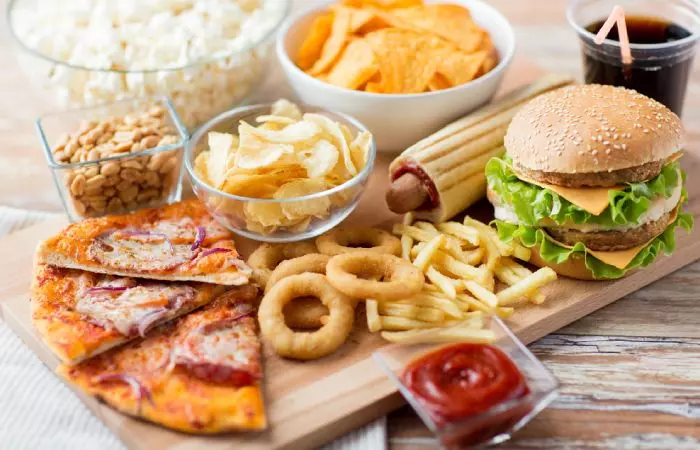
You must be able to identify foods high in sodium in order to avoid them to support cardiovascular health. Avoid the following foods on a low-sodium diet (19), (24), (25), (26), (27).
| Processed foods | Fast foods, snack products, cereals, bread, biscuits, crackers, etc. |
| Cured meats | Bacon, ham, etc. Limit other meats to 4 to 6 ounces per day. |
| Salty snacks | Tortilla chips, corn chips, pretzels, etc. |
| Canned or frozen dinners | Canned soups, peas, tomatoes, etc. |
| Condiments | Olives, sauerkraut, pickles, and other vegetables prepared in a brine. |
| Beverages | Cola drinks (e.g. Coke, Pepsi) |
| Dairy | All cheeses. Limit milk to 2 cups a day. |
Customizing your meal plan is the best way to avoid overdosing on high-sodium foods. It also helps keep your food options sorted. View the 7-day meal plan below for low-sodium breakfast, lunch, snack, and dinner ideas.
7-Day Low-Sodium Diet Meal Plan
| Breakfast | Lunch | Snacks | Dinner | |
|---|---|---|---|---|
| Day 1 | Scrambled eggs with spinach and tomatoes (2 eggs) with fresh fruit salad (1 cup) | Grilled chicken breast (4-6 oz) with a side salad (lettuce, cucumbers) and vinaigrette dressing with cooked quinoa (1/2 cup) | Greek yogurt (6 oz) with honey and berries (1/2 cup) | Baked salmon (4-6 oz) with lemon and dill, steamed broccoli and carrots (1 cup) and brown rice (1/2 cup) |
| Day 2 | Oatmeal (1/2 cup) with sliced banana and a sprinkle of cinnamon and almond milk (unsweetened) (1 cup) | Lentil soup (1 cup, homemade with low-sodium broth), mixed green salad with balsamic vinaigrette (1 cup) /td> | Sliced cucumber and carrot sticks (1 cup) with hummus | Grilled shrimp skewers (4-6 oz) with garlic and lime and roasted asparagus (1 cup) quinoa (1/2 cup) |
| Day 3 | Whole grain toast (1 slice) with avocado and cherry tomatoes with fresh orange juice (no added salt) (1 cup) | Turkey and avocado wrap with whole wheat tortilla (low-sodium turkey, 4-6 oz) with a side of mixed greens (1 cup) | Apple slices with almond butter (2 tbsp) | Baked chicken breast (4-6 oz) with rosemary and thyme, steamed green beans (1 cup) and mashed potatoes (prepared with unsalted butter, 1/2 cup) |
| Day 4 | Greek yogurt parfait (6 oz) with low-sodium granola (1/4 cup) and berries | Spinach and feta stuffed bell peppers (2 halves) and quinoa (1/2 cup) | Cottage cheese (1/2 cup) with pineapple chunks | Grilled tilapia (4-6 oz) with a lemon-herb marinade, steamed spinach (1 cup), and wild rice (1/2 cup) |
| Day 5 | Smoothie with banana, spinach, unsalted almonds (1/4 cup), and almond milk (1 cup) | Chickpea salad with cucumber, cherry tomatoes, and a lemon-tahini dressing (1 cup) | Mixed nuts (unsalted, 1/4 cup) | Baked tofu (4-6 oz) with a ginger-soy glaze, sauteed mushrooms and carrots (1 cup) with brown rice (1/2 cup) |
| Day 6 | Whole grain cereal (1 cup) with sliced strawberries and skim milk (low-sodium) (1 cup) | Caprese salad (tomatoes, fresh mozzarella, basil, 2-3 slices) Whole grain crackers (low-sodium, 5-6 pieces) | Sliced bell peppers (1 cup) with guacamole (2 tbsp) | Grilled portobello mushrooms (2 mushrooms) with balsamic glaze Sautéed spinach with garlic (1 cup) Quinoa (1/2 cup) |
| Day 7 | Scrambled egg whites (2 eggs) with spinach and mushrooms (seasoned with herbs) Sliced cantaloupe (1 cup) | Brown rice bowl with grilled chicken (4-6 oz), steamed broccoli (1 cup), and a teriyaki sauce (low-sodium, 2 tbsp) | Low-sodium yogurt (1 cup) | Baked cod (4-6 oz) with a tomato and olive tapenade Roasted Brussels sprouts (1 cup) Quinoa (1/2 cup) |
You can easily customize this meal plan to suit your preferences and dietary needs. Once your plan is ready, one effective strategy is to prepare large batches of healthy, low-sodium meals ahead of time. These meals can be conveniently stored in the fridge or freezer for quick and easy access, ensuring you always have a nutritious option. For instance, consider making a big pot of vegetable soup using fresh, seasonal ingredients or roasting trays of mixed vegetables. You can also cook a large batch of whole grains like quinoa or rice.
Dieting can be tricky and may make you crave unhealthy options no matter how hard you try to avoid them. You can make your low-sodium diet interesting yet up to the guidelines. Learn about it in the following section.
Tips To Incorporate Low-Sodium Foods Into Meals And Snacks
According to FDA guidelines, if a food serving has 5% or less of the daily value for sodium, which is less than 2.3 mg, it is considered low-sodium. If the serving has 20% or more, then it’s high-sodium (16). Keep this in mind when picking what food to eat. Some additional tips are mentioned below (25):
- When choosing canned products, look for “low-sodium” options.
- Eat tuna and salmon that are packed in water instead of oil.
- Use wines and vinegar as a substitute for salt to enhance flavors.
- You can have a total of up to 1/8th of a teaspoon of salt in your meals and snacks.
- Use potassium salt substitutes instead of sodium.
- When picking high-sodium foods, balance them with very low-sodium foods for the rest of the meals
- Avoid placing the salt shaker/container on the dining table.
Now it is time for some lip-smacking recipes that you can prepare easily. Scroll down to explore more.
Easy Low-Sodium Recipes
1. Grilled Lemon Herb Chicken
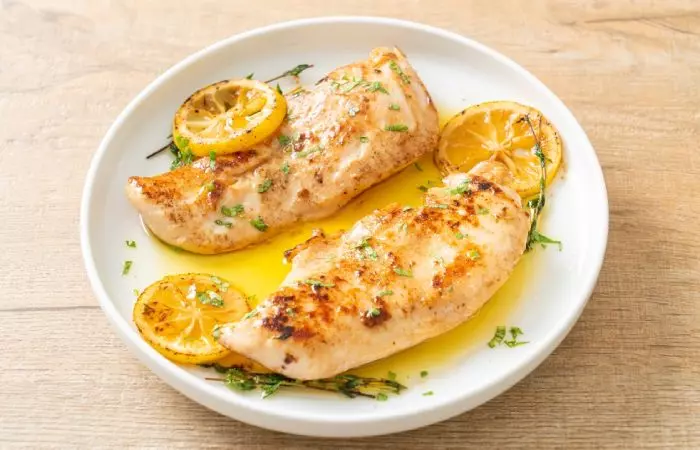
Ingredients
- 2 boneless, skinless chicken breasts
- 2 tablespoons of olive oil
- 2 cloves of garlic (minced)
- 1 lemon (juiced and zested)
- 1 teaspoon of dried thyme
- 1 teaspoon of dried rosemary
- Salt-free seasoning blend (to taste)
- Freshly ground black pepper (to taste)
How To Prepare
- Preheat your grill to medium-high heat.
- Mix olive oil, minced garlic, lemon juice, lemon zest, dried thyme, dried rosemary, salt-free seasoning blend, and black pepper in a bowl
- Place the chicken breasts in a resealable bag. Pour the marinade over the chicken and seal the bag. Refrigerate for 30 minutes.
- Take the chicken out and grill it for about 6-8 minutes per side so that it is no longer pink in the center.
- Serve with your favorite low-sodium side dishes, such as steamed vegetables and quinoa.
2. Tomato Basil Salad
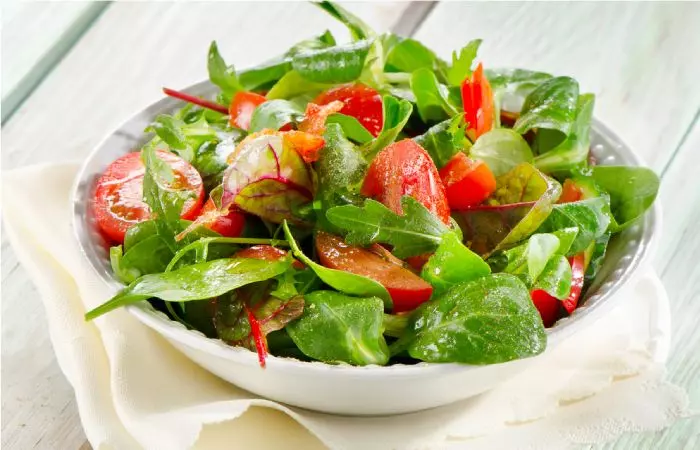
Ingredients
- 4 ripe tomatoes (diced)
- 1/2 cup fresh basil leaves (chopped)
- 2 tablespoons of extra-virgin olive oil
- 1 tablespoon of balsamic vinegar (low-sodium)
- Salt-free seasoning blend (to taste)
- Freshly ground black pepper (to taste)
How To Prepare
- Mix diced tomatoes and basil in a bowl.
- In a separate bowl, mix extra-virgin olive oil, balsamic vinegar, salt-free seasoning blend, and black pepper to make the dressing.
- Pour the dressing over the tomato and basil mixture and gently toss to coat.
- Let the salad sit for about 10-15 minutes at room temperature to allow the flavors to meld together.
- Serve as a refreshing side salad or as a topping for grilled chicken or fish.
The amazing benefits of a low-sodium diet may make you want to cut out all salt from your meal. But wait a minute. Too much (or too little) of anything can be bad for your health, especially when it comes to diet. See how the strict limitation of sodium can be bad for your health.
Potential Risks Of A Low-Sodium Diet
Extremely low intake of sodium may interfere with the body’s natural function but consuming it excessively does no good either (2). Low sodium levels in the body can lead to the following health concerns (28):
- ConfusionConvulsions
- Irritability
- Fatigue
- Muscle weakness
- Headache
- Restlessness
- Loss of appetite
- Vomiting
- Cramps
- Nausea
Sodium is vital for bodily functions but excessive intake can lead to health problems. Take a low-sodium diet that is as per your health requirements. Extremely high and low sodium could be equally bad for health. Planning a low-sodium diet involves knowing recommended daily limits, identifying low-sodium foods, and avoiding high-sodium items. Its benefits include improved blood pressure, heart and kidney health, and reduced edemai Swelling caused by an excessive accumulation of fluid in body tissues. . It’s essential to consult healthcare professionals for personalized advice, as a balanced low-sodium diet promotes overall well-being.
Frequently Asked Questions
How can I find low-sodium foods in grocery stores?
You can look for “low-sodium” labels on packaged foods and check nutrition labels for sodium content. Foods with 5% or less of the Daily Value (DV) for sodium are considered low-sodium.
Can you eat rice on a low-sodium diet?
Yes, you can eat rice on a low-sodium diet as it contains only 1 mg of sodium per 100 grams (29).
How can I check my sodium level at home?
You can only check your sodium levels through a blood test. However, you may look for symptoms such as nausea, high blood pressure, vomiting, swelling, etc., that may indicate high potassium levels.
How do you maintain flavor in meals while reducing sodium content?
Enhance flavor with herbs, spices, citrus, and vinegar instead of salt.
Is it necessary to eliminate all salt from the diet when following a low-sodium plan?
It’s not necessary to eliminate all salt, but use it sparingly. You can have 1/8th of a teaspoon of salt in a day.
Are there cooking techniques that can enhance taste without adding sodium?
Cooking techniques like roasting, grilling, and using aromatic ingredients can add flavor without extra sodium.
Can a low-sodium diet lead to weight loss or weight management?
A low-sodium diet may aid weight management by reducing overall ultra-processed foods in the diet. Following a low-sodium diet is associated with making overall more conscious food choices, which can lead to reduced caloric intake. Over a period of time, it may improve cardiovascular health and weight but using a low-sodium diet alone is not linked to weight loss (30).
Sodium is not just found in salt. It can sneak inside your body through fast foods, packed foods, high-sodium condiments, etc. This is why you need to pay special attention to your diet. Watch the following video to learn the way to reduce your sodium intake.
References
Articles on StyleCraze are backed by verified information from peer-reviewed and academic research papers, reputed organizations, research institutions, and medical associations to ensure accuracy and relevance. Read our editorial policy to learn more.
- Sodium
https://www.ncbi.nlm.nih.gov/pmc/articles/PMC3951800/ - Prevalence of salt rich fast food consumption: A focus on physical activity and incidence of hypertension among female students of Saudi Arabia
https://www.ncbi.nlm.nih.gov/pmc/articles/PMC7499107/ - Sodium intake and health: what should we recommend based on the current evidence?
https://www.ncbi.nlm.nih.gov/pmc/articles/PMC8468043/ - Reduction in dietary sodium improves blood pressure and reduces cardiovascular events and mortality
https://www.ncbi.nlm.nih.gov/pmc/articles/PMC5673777/ - Sodium and health—concordance and controversy
https://www.ncbi.nlm.nih.gov/pmc/articles/PMC7318881/ - Initiatives to reduce the content of sodium in food products and meals and improve the population’s health
https://www.ncbi.nlm.nih.gov/pmc/articles/PMC10222223/ - Dietary sodium and health: more than just blood pressure
https://www.ncbi.nlm.nih.gov/pmc/articles/PMC5098396/ - Salt reduction World Health Organisation
https://www.who.int/news-room/fact-sheets/detail/sodium-reduction - Effect of lower sodium intake on health: systematic review and meta-analyses
https://www.ncbi.nlm.nih.gov/pmc/articles/PMC4816261/ - Effect of a low-salt diet on chronic kidney disease outcomes: a systematic review and meta-analysis
https://pubmed.ncbi.nlm.nih.gov/35017237/ - Impact of nutritional factors on incident kidney stone formation: a report from the whi os
https://www.ncbi.nlm.nih.gov/pmc/articles/PMC4165387/ - A low-sodium diet boosts ang (1-7) production and no-cgmp bioavailability to reduce edema and enhance survival in experimental heart failure
https://pubmed.ncbi.nlm.nih.gov/33919841/ - Effect of dietary salt intake on risk of gastric cancer: a systematic review and meta-analysis of case-control studies
https://www.ncbi.nlm.nih.gov/pmc/articles/PMC9609108/ - Sodium and bone health: impact of moderately high and low salt intakes on calcium metabolism in postmenopausal women
https://pubmed.ncbi.nlm.nih.gov/18410231/ - Influence of dietary salt intake on T2D treatment
https://www.ncbi.nlm.nih.gov/pmc/articles/PMC9240780/ - Food Labeling & Nutrition Sodium in Your Diet FDA
https://www.fda.gov/food/nutrition-education-resources-materials/sodium-your-diet - Effect of water rinsing on sodium content of selected foods
https://pubmed.ncbi.nlm.nih.gov/6833685/ - Dietary intake of sodium by children: Why it matters
https://www.ncbi.nlm.nih.gov/pmc/articles/PMC7002818/ - Nutrition information for raw vegetables
http://www.fda.gov/food/nutrition-food-labeling-and-critical-foods/nutrition-information-raw-vegetables - DASH diet to stop hypertension
https://www.ncbi.nlm.nih.gov/books/NBK482514/ - The feasibility of achieving low-sodium intake in diets that are also nutritious low-cost and have familiar meal components
https://www.ncbi.nlm.nih.gov/pmc/articles/PMC3591307/ - Lower-sodium foods: shopping list
https://odphp.health.gov/myhealthfinder/health-conditions/heart-health/lower-sodium-foods-shopping-list - Dairy product consumption and incident prediabetes in Dutch middle-aged adults: the Hoorn Studies prospective cohort
https://www.ncbi.nlm.nih.gov/pmc/articles/PMC8783852/ - Olives ripe canned (small-extra large) U.S. Department of Agriculture
https://fdc.nal.usda.gov/fdc-app.html#/food-details/169094/nutrients - Tips for a low sodium diet
https://www.cdss.ca.gov/agedblinddisabled/res/VPTC2/9%20Food%20Nutrition%20and%20Preparation/Tips_for_a_Low_Sodium_Diet.pdf - Sodium concentration of water from softeners
https://pubmed.ncbi.nlm.nih.gov/9009980/ - Milk buttermilk fluid cultured lowfat U.S. Department of Agriculture
https://fdc.nal.usda.gov/fdc-app.html#/food-details/170874/nutrients - Low blood sodium National Library Of Medicine
https://medlineplus.gov/ency/article/000394.htm - Rice white long-grain regular unenriched cooked without salt U.S. Department of Agriculture
https://fdc.nal.usda.gov/fdc-app.html#/food-details/169757/nutrients - Low salt and low calorie diet does not reduce more body fat than same calorie diet: a randomized controlled study
https://www.ncbi.nlm.nih.gov/pmc/articles/PMC5823556/
Read full bio of Sylvia North
Read full bio of Himanshi Mahajan
Read full bio of Arshiya Syeda
Read full bio of Moksha Gandhi








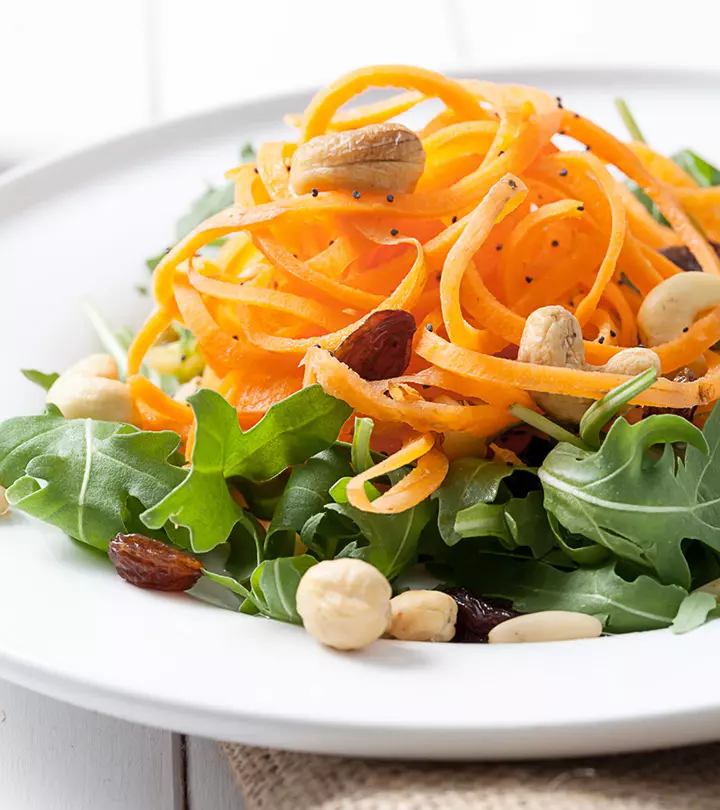





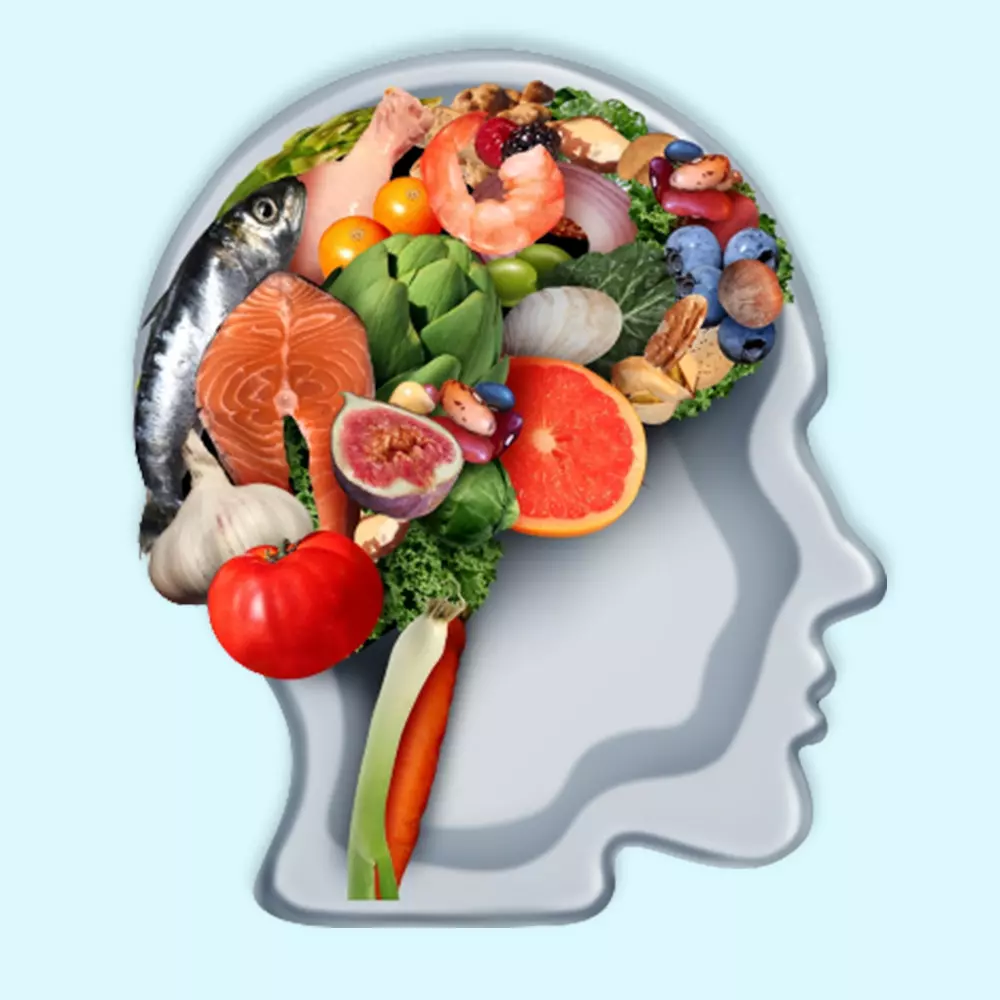

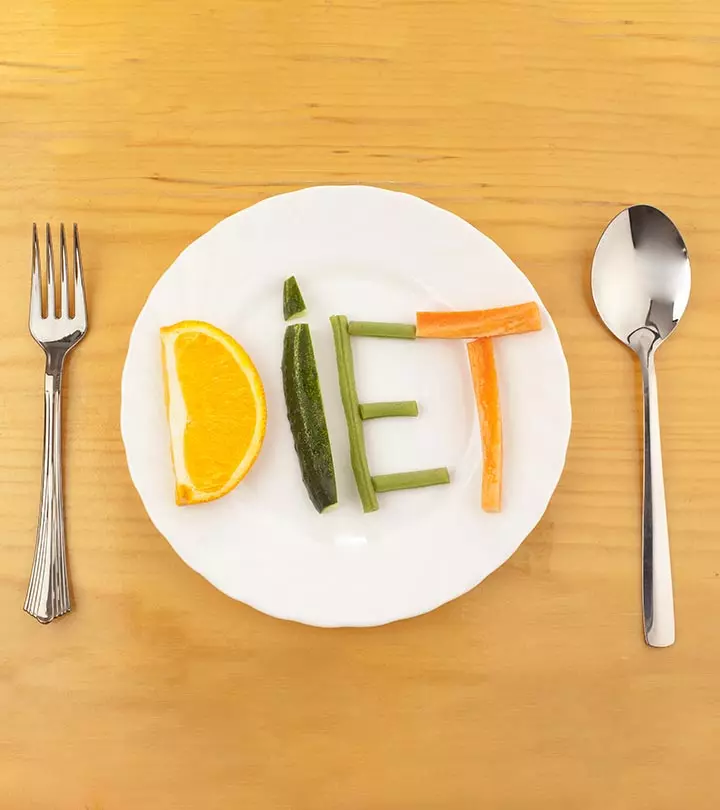
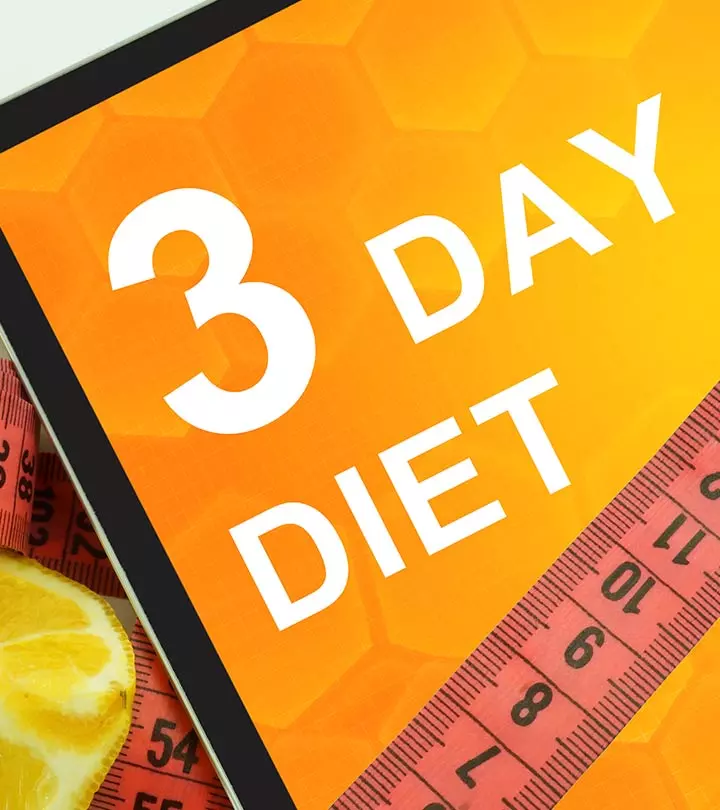

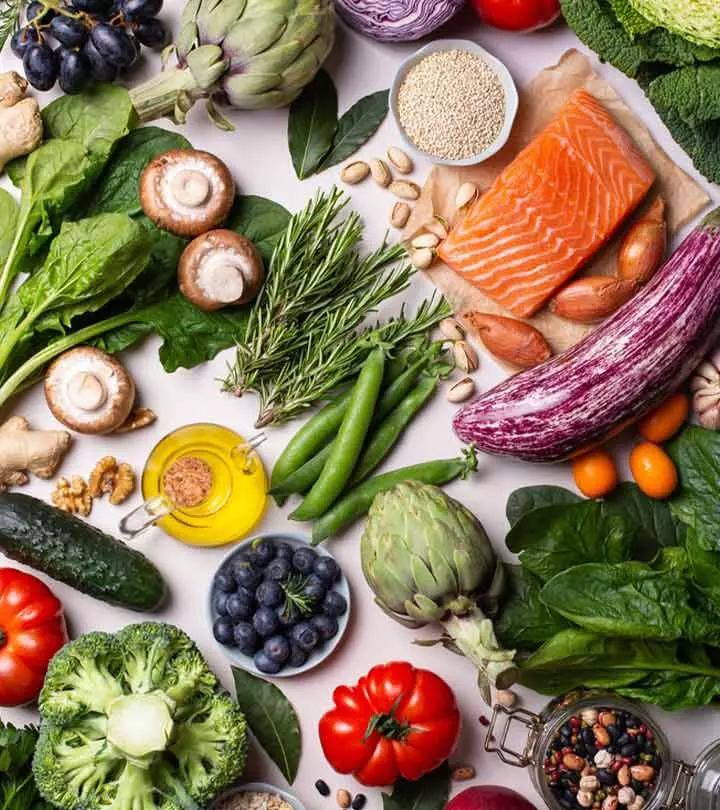
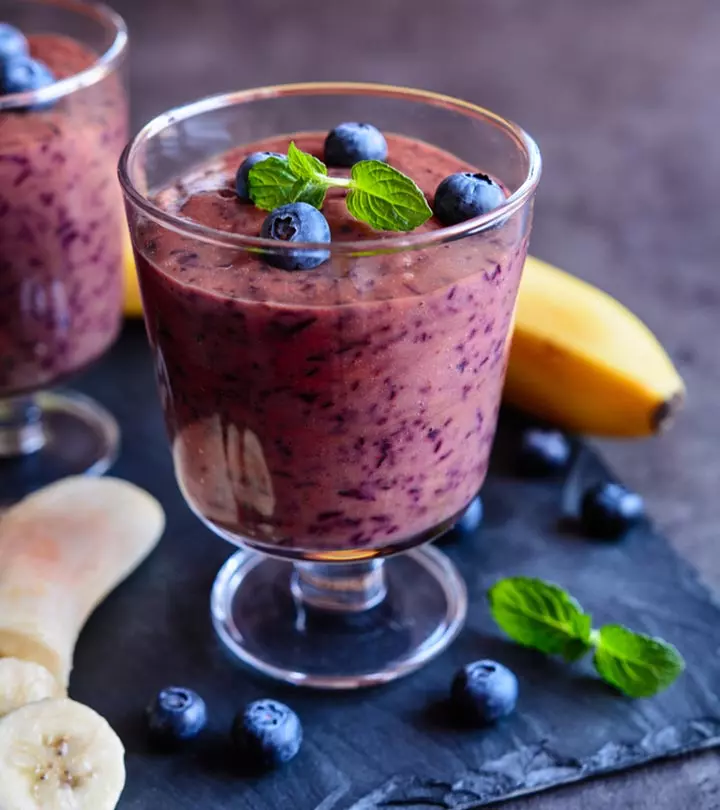


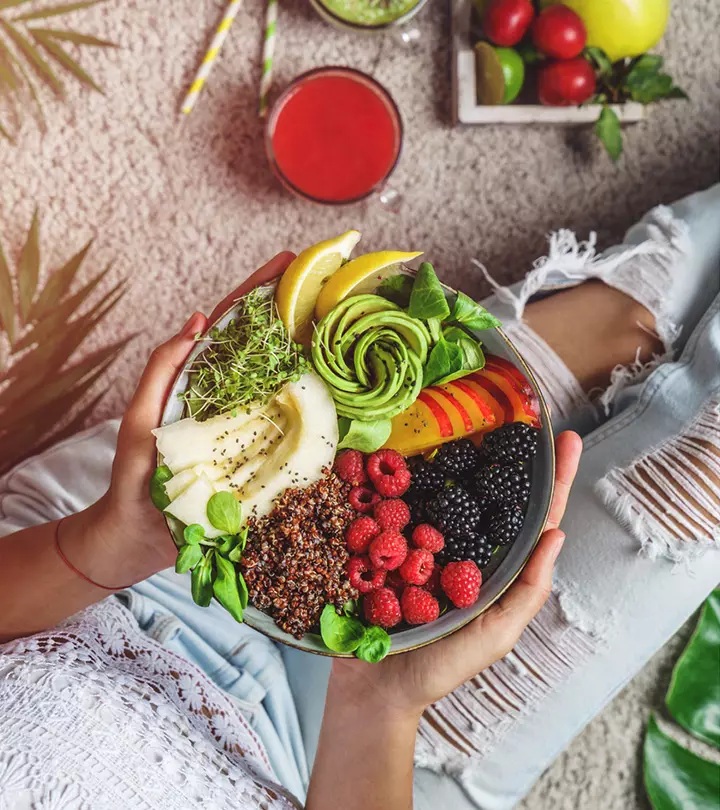
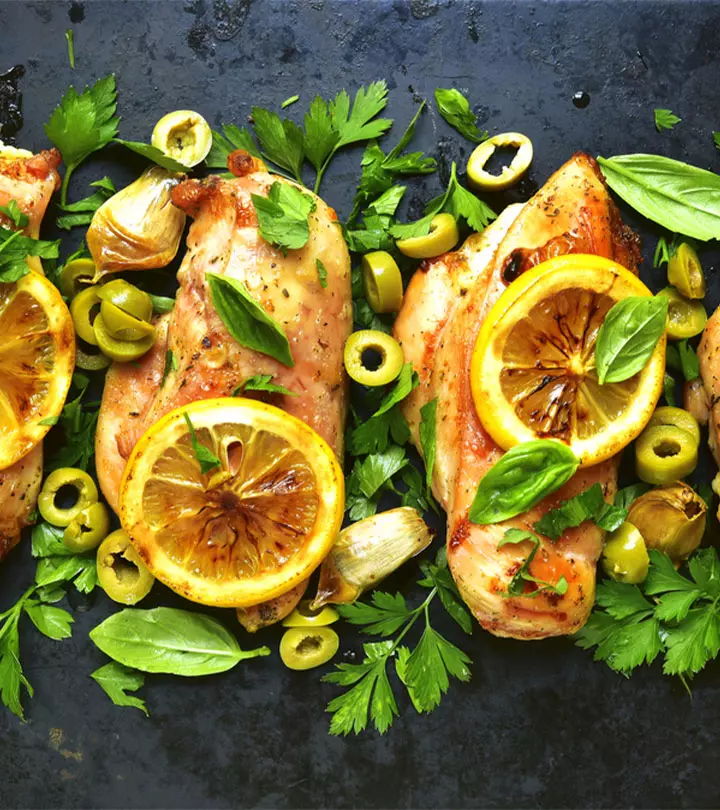

Community Experiences
Join the conversation and become a part of our empowering community! Share your stories, experiences, and insights to connect with other beauty, lifestyle, and health enthusiasts.